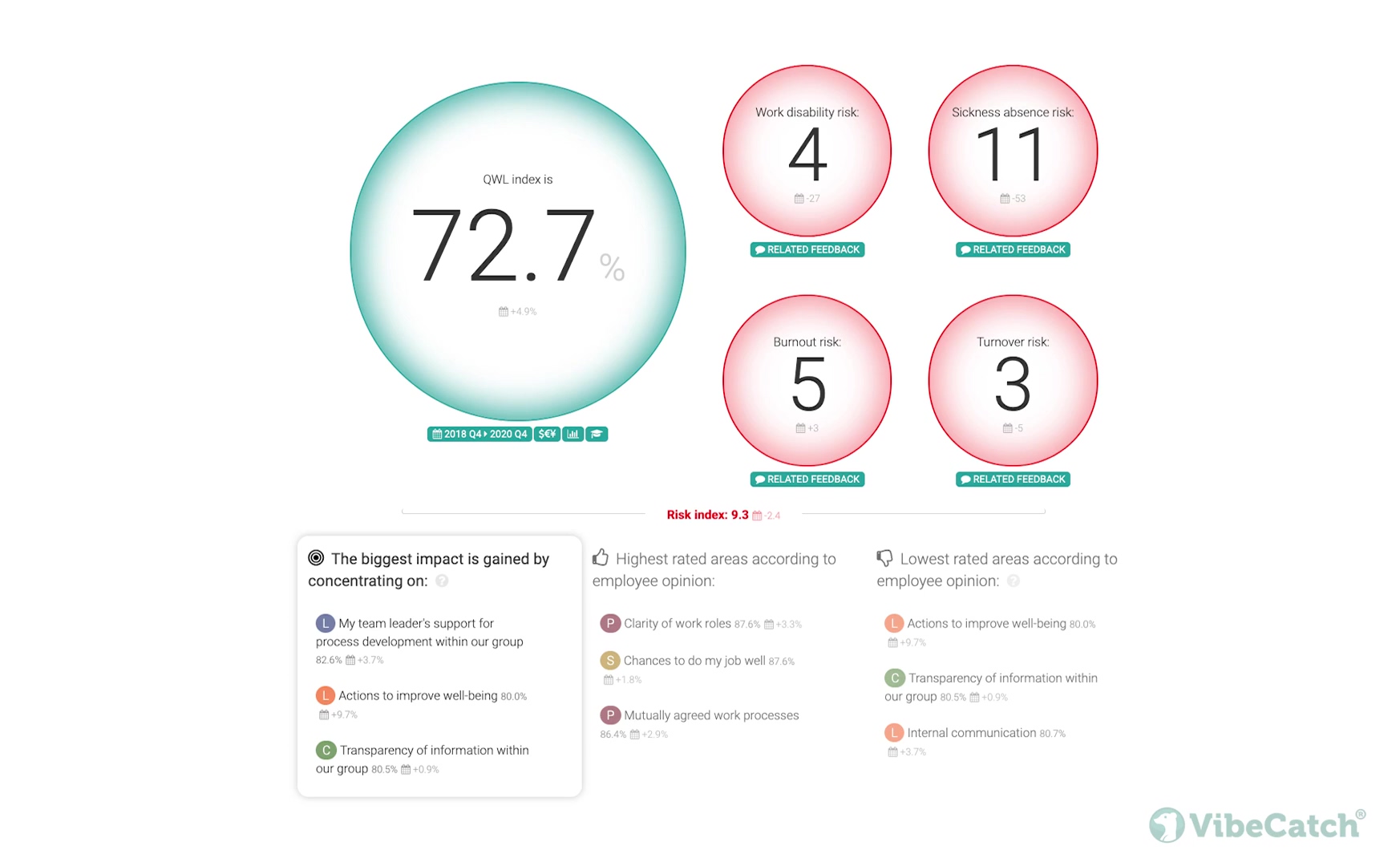Australian statistics report that 92% of their serious mental health concerns in the workplace are mainly caused by work-related stress. Other countries are not far off, unfortunately.
Problems like mental exhaustion, physical weariness and emotional burnout put employees at risk of what’s called ‘work disability’.
Work disability risk occurs when employees become unable to work due to ongoing illnesses, consistent anxiety or enduring injuries. This can be due to extreme job dissatisfaction and stress, resulting in employees losing the motivation to go to work and perform their roles. As a result, your company suffers from longer-term negative consequences including lost productivity, poor customer service and lower revenue generation.
Every business and employee wants to avoid this outcome. So it’s important to understand work disability risk and how you can mitigate its impact.
What is work disability risk?
Your organisation is in danger of work disability risk if your employees are experiencing ongoing exhaustion or depletion, developing cynicism and detachment from their colleagues or have continuing uncertainties about their work and careers.
If you have a high sickness absence or burnout risk in the shorter term and you do not take corrective actions to mitigate it, this can grow into work disability risk.
Work disability risk increases as your team take sick leave or are absent from work for longer periods of time – whether that’s due to physical, mental or emotional exhaustion, or a combination of all three. Physical health issues include fatigue, insomnia and headaches, and mental health concerns include anxiety, depression and irritability.
This work disability risk also arises when your Quality of Work Life is low, which indicates that employees are so unhappy and dissatisfied with their jobs that they no longer want to show up for work.

How does work disability risk affect your business?
Did you know that employees’ poor psychological conditions are costing Australian businesses an estimated $10.9 billion per year, including $4.7 billion in absenteeism and $146 million in compensation claims?
The concerning part is that this number doesn’t even consider the losses experienced whenever employees take frequent sick leave days or unwarranted absences due to physiological problems.
Aside from affecting your bottom line, work disability risk can also be detrimental across many other aspects of your business, including:
- Work disability risk diminishes overall productivity.
When employees become unfit or incapable to do their job, their team may struggle while trying to compensate.
- Employees who can’t deliver quality work can affect customer satisfaction.
Low performance can mean damaging client relationships, leading to poor customer management, a negative reputation and decreasing sales for the business.
- Work disability risk leads to operational inefficiencies.
In an attempt to maintain operations, management may be forced to hire temporary workers to cover for those who can’t, resulting in extra training costs, hiring fees and a shifting workforce.
- Work disability risk develops into a poor organisational culture
When employees are feeling unmotivated, they can also affect the attitude and morale of the remaining staff – yes, even those who are performing well. There’s also the risk of increasing the employee turnover rate. Employees will most probably just choose to leave if they can no longer bear the long list of tasks they have to do, trying to compensate for the lack of support.

Fig 1. Quality of work life Risk index dashboard
How to address work disability risk
To manage work disability risk and prevent it from causing significant problems within your business, you must first identify the extent of which it’s occurring.
Knowing how many of your employees are experiencing physical, emotional and mental exhaustion is the first step to understanding their reasons for not being able to go to work. It’s also important to establish an effective communication method, so you can recognise employee concerns and gain important insights into the issue.
Fortunately, VibeCatch’s innovative employee engagement QWL (Quality of Work Life) survey enables you to facilitate continuous listening to monitor risks. By offering a way to detect work disability risk, the QWL survey helps you implement initiatives that can improve the current welfare of your team.
 How does a QWL survey assess work disability risk?
How does a QWL survey assess work disability risk?
As we mentioned earlier, work disability risk arises when your Quality of Work Life is low.
The Quality of Work Life (QWL) poll is a type of pulse survey that can help you measure the job satisfaction of employees.
It calculates QWL using three factors:
- Physical and Emotional Safety
- Social Cohesion and Identity
- Goals and Creativity
The data and insights VibeCatch’s QWL survey provides are built on a scientific method of determining where each department, employee group or worker stands in terms of the different risks – including work disability risk.
It also offers Heatmap and Distribution features that enable you to effectively assess employees’ attitudes and health to obtain accurate results and take necessary action. The QWL polls are anonymous and customizable, so it’s easier to encourage more participation and honesty.
With VibeCatch’s QWL survey, you now have a proactive approach to deal with worker disability risk and avoid all the negative impacts that come along with it – before they happen to your business.
What is VibeCatch?
VibeCatch is an HR platform based on 15 years of proven research, offering you the opportunity to make a difference and prove the impact that you know you make every single day for the people around you.
Through VibeCatch’s QWL Polls, Pulse Polls and 360 Feedback Polls, you can uncover hidden opportunities, correct issues and address areas of improvement for both employees and management.
Book an obligation-free consultation and we’ll discuss your options to show you how VibeCatch can help you help everyone.




